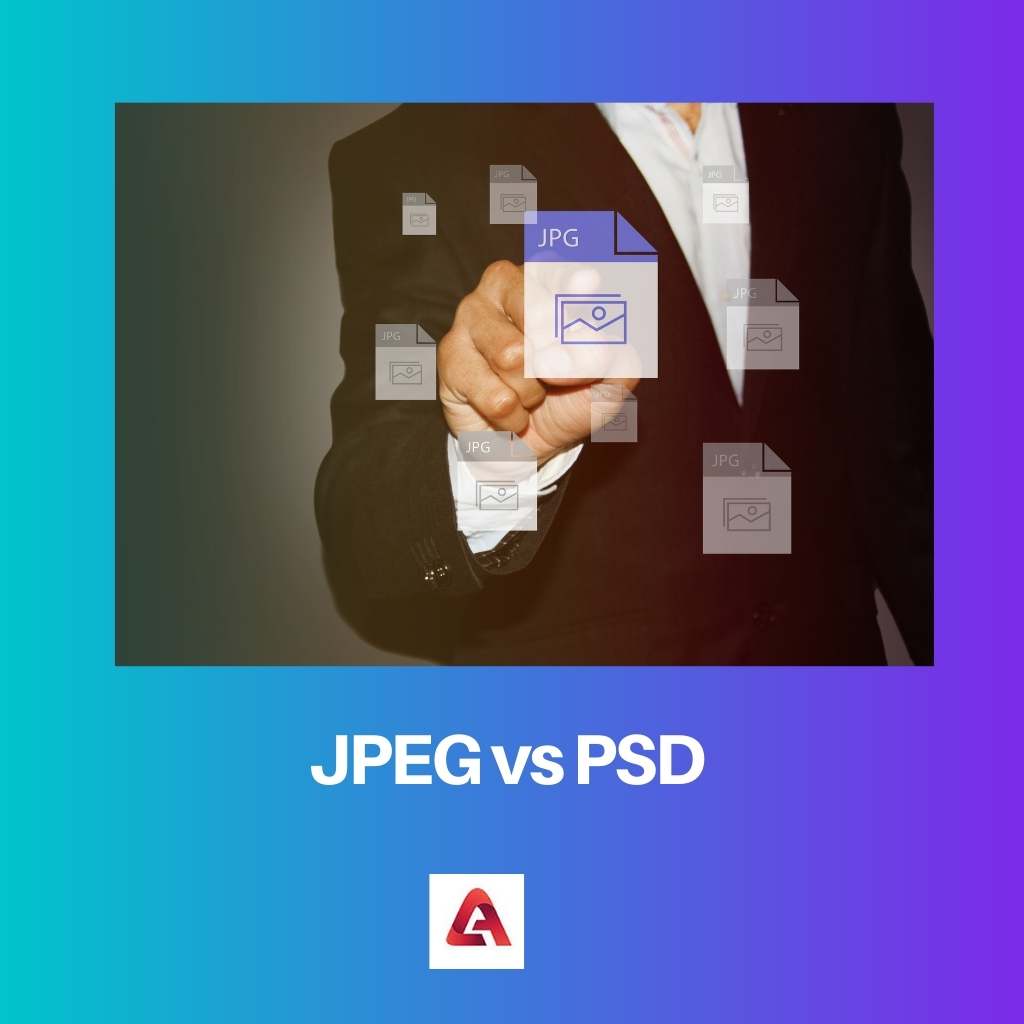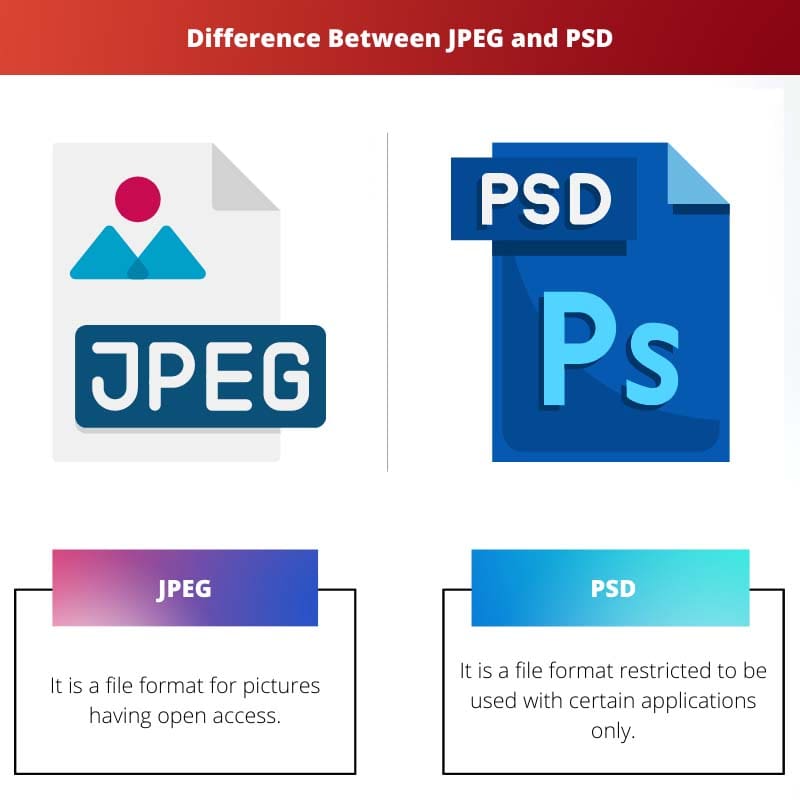As digitalization has taken over the world, memories are now being saved as audio, videos, and images, and to do so, certain formats are required in the digital world.
JPEG and PSD are two such formats that people mostly use to store their images, but there can be certain advantages and disadvantages attached to these two formats that should be highlighted.
Key Takeaways
- JPEG is a lossy compression format, while PSD maintains image quality with lossless compression.
- JPEG files are smaller and more suitable for web use, whereas PSD files are larger and ideal for professional editing.
- PSD supports layers and advanced editing features, while JPEG does not.
JPEG vs PSD
The difference between JPEG and PSD is that the former is a format that can be used by almost everyone and is compatible with almost all types of devices and applications. But on the other hand, the latter is basically attached to a very popular editing software called Photoshop and can only be opened with the help of the same.

The full form of JPEG is a joint photographic expert group, and the term stands to represent a particular format in which images are saved all across the world digitally.
The most significant reason behind its huge fan following and popularity is that it is compatible with almost all types of devices and takes up less space in saving images.
But on the other hand, PSD is a term that stands for Photoshop document and basically represents a format that is initially attached to the software of Adobe.
This file format does not happen to be supported on its own and can only be accessed while using applications of Adobe.
Comparison Table
| Parameters of Comparison | JPEG | PSD |
|---|---|---|
| Meaning | It is a file format for pictures having open access. | It is a file format restricted to be used with certain applications only. |
| Full form | Joint photographic expert group | Photoshop document |
| Created by | Joint photographic experts group | Adobe |
| Compatibility | This format is compatible with almost all devices and applications | this format is compatible with applications belonging to Adobe only |
| Quality of images | the quality of images gets compromised in this format | the quality of images stays intact |
| Size of images | Reduces the size | Keeps the size intact |
What is JPEG?
In the year 1991, a group of photographers and tech developers known by the name ‘joint photographic experts’ group’ came up with the idea of developing a particular format for images in which all people can access a particular image on any device.
This idea became the reason behind the invention of the JPEG format. The term stands for joint photographic experts group and attains its identity from the people who have created it. This format goes by two major extensions, which are- .jpg and .jpeg.
This is a very popular format all across the world, and almost all people have seen or used this format more than once in their life.
The major reason behind the popularity of this format is that it is very compatible with all kinds of applications and can be opened and accessed on almost all kinds of devices.
This compatibility makes it a universally accepted format. However, there are certain setbacks that are attached to this format. For instance, this format can reduce the quality of an image to some extent and make it blurry if it is edited repeatedly in this format.
What is PSD?
PSD stands for Photoshop document and represents a file extension that is, by default, a property of Adobe Photoshop. In simple words, whenever an image is accessed in any application of Adobe, it is seen with the extension PSD.
Therefore, it can be concluded that it is not a standard format but a format attached to one single application only and can only be accessed while accessing that particular application.
In comparison to its other counterparts, this format is less popular, but it can be very useful for certain specific purposes. In cases where an image needs to be edited repeatedly, it is better to use this format in comparison to other formats as it keeps the image’s size and quality intact throughout the process’s very end. It does not tamper with the quality at all.
However, one problem attached to this format is that the accessibility of this format is very limited, and it cannot be accessed on all kinds of applications.
This file extension only opens when a person is using the applications of Adobe. This particular feature makes it difficult to use this file in other applications as it requires conversion.
Main Differences Between JPEG and PSD
- JPEG is a term that stands for joint photographic experts group, while on the other hand, PSD is a term that stands for Photoshop document.
- The joint photographic experts group created JPEG, while on the other hand, PSD was created by the Adobe group.
- JPEG compresses the images to a reduced size while, on the other hand, PSD keeps the size of the image intact.
- JPEG can compromise the quality of images, while on the other hand, PSD keeps the images at their true quality.
- JPEG is suitable when the picture does not need multiple edits, while on the other hand, PSD is suitable when multiple edits are required in a particular image.
